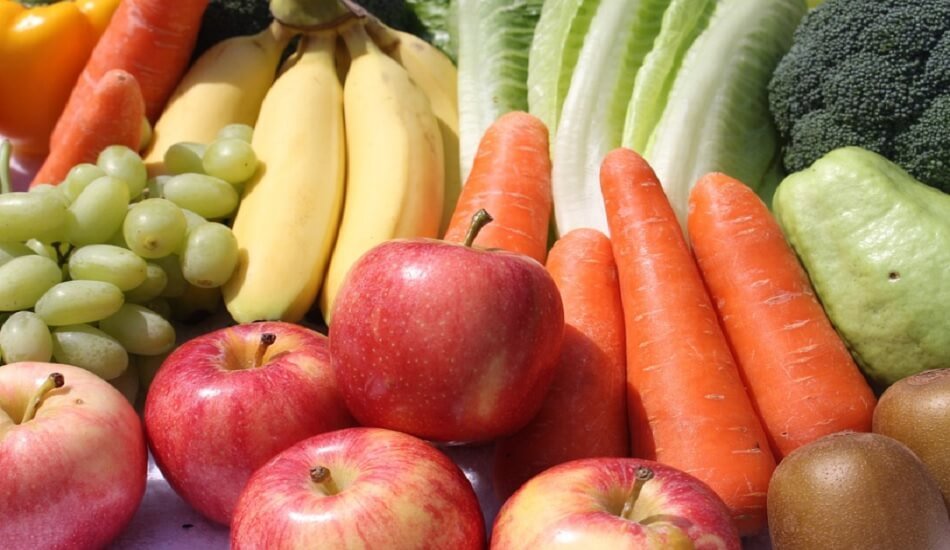Despite obstacles, India’s horticultural industry has tremendous potential
Horticulture in India has proven to be more profitable and productive than agriculture, and it has emerged as a rapidly growing industry. According to the Agricultural and Processed Food Products Export Development Authority (APEDA), India is the world’s second-largest producer of fruits and vegetables, trailing only China.
The country’s advantage is that it is a low-cost producer of fruits and vegetables due to a combination of factors including favorable agro-climatic conditions, labor availability, and low input costs. As a result, fruits and vegetables account for nearly 90% of the country’s total horticulture production.
Horticulture contributes around 30.4% of GDP while using only 13.1% of gross cropped area, making it an important player in India’s agricultural growth. In recent years, total horticulture production in India has even surpassed total food grain production, highlighting the sector’s potential. Horticulture not only contributes to the country’s nutritional needs, but it also creates additional job opportunities in rural areas, broadens the range of agricultural activities, and increases farmer income.
Also Read | Punjab to build horticulture estates to help produce high-quality fruits
Horticulture productivity has increased significantly, rising from 8.8 tonnes per hectare (TPH) in 2001-02 to 12.1 TPH in 2020-21, resulting in a sharp rebound in production and acreage that has far outpaced foodgrains production since 2012-13. In 2021-22, total horticulture production was estimated to be around 341.63 million tonnes, with fruit production estimated to be around 107.10 million tonnes and vegetable production estimated to be around 204.61 million tonnes.
With a large horticultural production base, there is ample opportunity for export, with fresh fruits and vegetables being a major contributor. According to APEDA, the country will export fresh fruits and vegetables worth ₹11,412.50 crore in 2021-22. Fresh fruits and vegetables are primarily exported to Bangladesh, the UAE, Nepal, the Netherlands, Malaysia, Sri Lanka, the United Kingdom, Oman, and Qatar.
Despite the fact that India’s horticulture sector is expanding, the country’s contribution to global trade remains insignificant, accounting for only 1% of global vegetable and fruit trade. Production and marketing challenges, insufficient transportation infrastructure, fragmented supply chains, and insufficient storage facilities are all undermining export growth. These factors cause delays and waste, discouraging farmers from improving the quality of their produce.
Many production challenges, such as small operational landholdings, a lack of irrigation, and poor soil management, prevent the horticulture sector from reaching its full potential. Consider small operational landholdings, which limit the amount of land available for cultivation and thus the number of horticultural crops that can be produced.
Crop rotation and the use of sustainable agricultural practices are also impacted by limited land availability, as small farmers may lack the space to rotate crops effectively or implement sustainable soil management practices. This can lead to decreased yields and soil fertility over time.
Inadequate irrigation water, combined with poor soil management practices such as over-tilling, over-fertilization, and monocropping, can reduce soil fertility, resulting in lower yields and lower-quality produce. Irrigation is especially important during dry spells or droughts, when crops can quickly wither and die due to a lack of water supply.
Excessive water, on the other hand, can be harmful, causing waterlogging, root damage, and decreased yields. The government is addressing the irrigation issue through the Pradhan Mantri Krishi Sinchayee Yojana (PMKSY), which aims to promote irrigation infrastructure development, expand cultivable land, and improve on-farm water efficiency. Another constant threat to horticultural crops is pests and diseases. Insect infestations, fungal infections, and other diseases can spread quickly, resulting in decreased output and crop losses.
Farm insurance and farm mechanization have a limited reach, and small and marginal farmers have limited access to institutional credit, which contributes to lower investment in the sector. To ensure adequate credit flow, the government establishes annual targets for credit flow to the agriculture sector, which banks consistently exceed. Notably, the government offers a 2% interest subsidy on short-term crop loans up to ₹ 3 lahks.
Climate change, which includes changing weather patterns, droughts, floods, and other natural disasters, is another significant challenge that can result in crop failures and losses, affecting the sector’s overall output. Land lease constraints are also a problem, especially for small farmers who may not have access to enough land for cultivation.
The horticulture sector also suffers from weak Farmer Producer Organizations (FPOs), which typically play an important role in horticulture development by providing farmers with access to markets, financing, and technical assistance. The weakness of these organizations contributes to the sector’s challenges, limiting farmers’ ability to fully capitalize on available opportunities.
Recognizing the need to strengthen farmers’ bargaining power, the government is implementing an FPO formation and promotion scheme with a budget of over ₹ 6,300 crore. This scheme aims to encourage the formation and strengthening of FPOs, as well as the development of agri-entrepreneurship among farmers.
Due to the perishable nature of fruits and vegetables, which makes efficient storage and transportation difficult, the horticulture marketing chain faces its own set of challenges. Delays and waste are exacerbated by poor logistics and a lack of equitable cold storage and warehousing facilities. The distribution of cold storage capacity among states is inequitable, with around 59% of the storage capacity (i.e., 21 MMT) concentrated in the four states of Uttar Pradesh, West Bengal, Gujarat, and Punjab, and the majority of it dedicated to the potato crop.
Top crops have a short shelf life due to a lack of storage and warehousing facilities, causing price increases in the same months each year. Farmers also lack guidance on which crops to plant, resulting in overproduction of some commodities and scarcity of others.
The horticulture industry will need to improve its production and value chain systems. Bayer and The Economic Times have collaborated to organize the India Horticulture Future Forum 2023 on April 26, 2023, to address the issues confronting the horticulture sector. Grant Thornton Bharat LLP is the event’s Knowledge Partner. The forum’s goal is to discuss the future of Indian horticulture, with a focus on developments, opportunities, and challenges in the industry.
Despite the numerous constraints that the horticulture sector faces, there are numerous opportunities for growth. The Agricultural Marketing and Farmer Friendly Reforms Index, launched by the NITI Aayog, ranks states and union territories based on their implementation of provisions proposed under the model APMC Act, participation in the e-NAM initiative, special marketing treatment for fruits and vegetables, and tax levies in mandis.
The government is also working to reduce crop losses through the Pradhan Mantri Fasal Bima Yojana (PMFBY), which provides comprehensive crop insurance coverage from pre-sowing to post-harvest losses against unavoidable natural disasters. Another important initiative is the Centre’s Cluster Development Programme, which has the potential to transform the value chain by increasing its scale. By leveraging the geographical specialization of horticulture clusters, the program aims to promote the integrated and market-led development of pre-production, production, post-harvest, logistics, branding, and marketing activities.
Meanwhile, the Ministry of Food Processing Industries has launched a number of initiatives aimed at promoting India’s food processing industry, including the development of cold chain infrastructure, agro-processing clusters, backward and forward linkages, preservation infrastructure, Operation Greens, and Mega Food Parks. These schemes provide storage, testing labs, and logistics to food processing units while also stabilizing the supply and prices of perishable commodities and promoting their value addition.
Also Read | Punjab to build horticulture estates to help produce high-quality fruits
In addition, the government has implemented post-harvest infrastructure schemes to reduce post-harvest losses, a Land Lease Act to help legalize leasing and provide tenants with access to insurance and credit, and Soil Health Cards to promote soil health.
India is widely regarded as one of the world’s leading producers of fruits and vegetables, and the horticulture sector has consistently outperformed in terms of output. Implementing these measures will allow the horticulture sector to expand even further and increase farmer profitability. This expansion may also assist in meeting the increasing demand for fruits and vegetables, both domestically and internationally.


















Add Comment